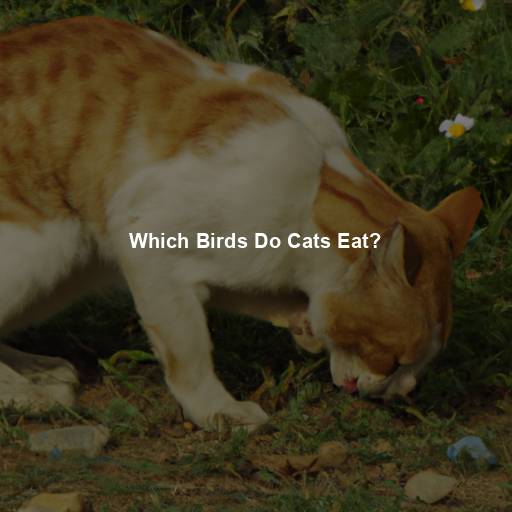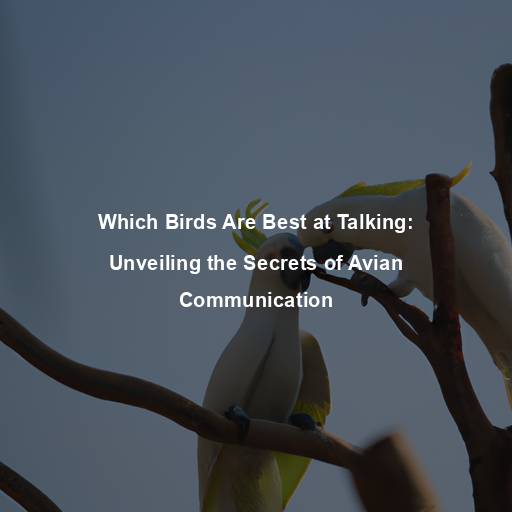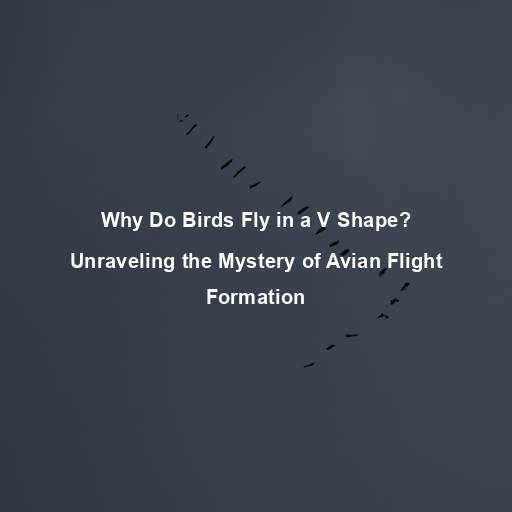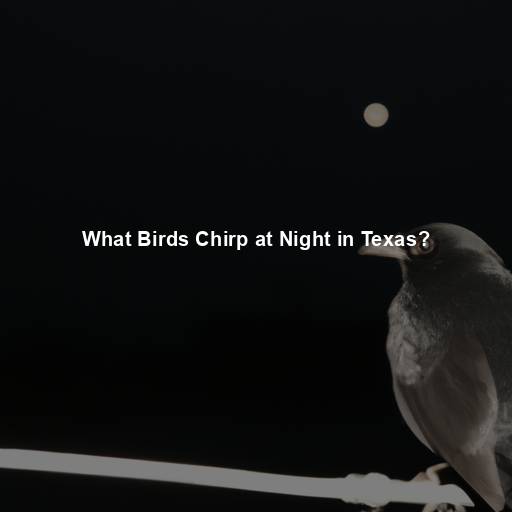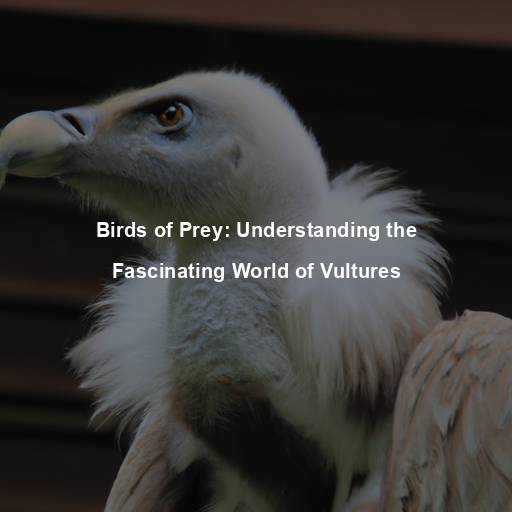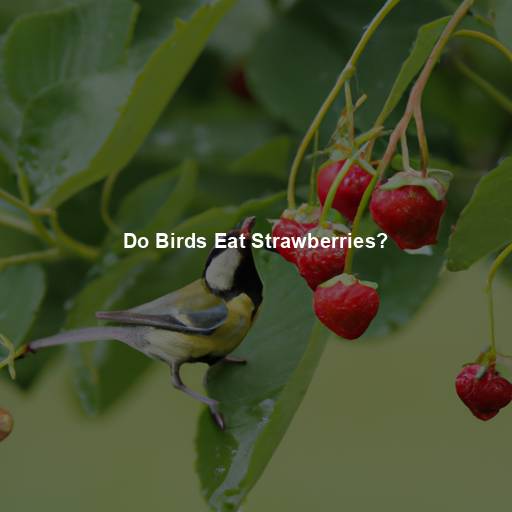Which Birds Do Cats Eat?
Last Updated on October 27, 2023 by Evan
Contents [hide]
- 1
- 2 Understanding a Cat’s Hunting Behavior
- 3 Birds Vulnerable to Cat Predation
- 4 Implications for Bird Populations
- 5 Responsible Pet Ownership
- 6 Finding Balance: Cats, Birds, and Biodiversity
- 7 Innovative Solutions and Technologies
- 8 The Power of Community Involvement
- 9 Promoting Responsible Bird Feeding
- 10 Engaging with Local Communities
- 11 The Power of Individual Actions
- 12 FAQs: Which Birds Do Cats Eat?
- 12.1 Can cats eat birds?
- 12.2 Do all cats eat birds?
- 12.3 Do cats kill birds for food?
- 12.4 Is it dangerous for birds if cats eat them?
- 12.5 How can I protect birds from being eaten by cats?
- 12.6 Are there bird species that are more commonly targeted by cats?
- 12.7 Will feeding my cat enough food prevent it from hunting birds?
- 12.8 What should I do if my cat consistently hunts and eats birds?
Cats embody the untamed spirit of the wild, with their mesmerizing agility and untamed instincts. Domesticated as our beloved companions, they infuse our lives with unbridled joy and unwavering companionship. Yet, amidst this bond, a perplexing predator surfaces – their inherent hunting prowess stirring up a tempestuous dance with the avian realm. Join us as we unravel the enigmas surrounding the feathered victims, revealing the birds who fall prey to our feline friends and the disconcerting implications that loom over the skies.
Understanding a Cat’s Hunting Behavior
The elusive nature of cats is woven into the very fabric of their existence. From the depths of their DNA emerges an innate hunting prowess that defies domestication. Even amidst abundance, these majestic creatures harbor an unyielding drive to stalk and conquer their prey, their agile bodies equipped with razor-sharp claws and teeth that bespeak a fierce and unrelenting prowess in the animal realm.
The Role of Instinct
Cats’ instinctual drive to hunt is influenced by various factors, including genetics, early experiences, and environmental stimuli. The sight of a fluttering bird or the sound of chirping can trigger their hunting instincts, leading them to pounce and attempt to capture their prey.
Day vs. Night Hunting
Hey there! Did you know that cats are not just creatures of the night? They’re actually crepuscular hunters, meaning they prefer to do their hunting during dawn and dusk. But here’s the thing – these crafty felines can surprise us by engaging in their hunting behavior at any hour of the day!
Birds Vulnerable to Cat Predation
Cats have been observed preying on a wide range of bird species, particularly those that are smaller in size and more accessible. Here are some examples of birds that are vulnerable to cat predation:
Songbirds
Songbirds, known for their melodious voices and vibrant plumage, are often targeted by cats. Species such as sparrows, finches, and warblers are at risk due to their small size and frequent presence in residential areas where cats roam.
Migratory Birds
The fascinating world of migratory birds brims with both wonder and concern as these intrepid travelers embark on their tireless odysseys during particular times of the year. Unfortunately, lurking amidst their heroic journeys lies a hidden peril: the threat of predation by cunning feline adversaries. Exhausted from their ceaseless flights, these courageous avian wanderers find themselves in a perplexing predicament, as their search for nourishment and respite intertwines with the ever-present danger of cat attacks.
Ground-Nesting Birds
Birds that build their nests on the ground, such as quails, pheasants, and some shorebirds, are particularly susceptible to cat predation. The low elevation of their nests makes them easy targets for cats prowling in search of prey.
Nestlings and Fledglings
As spring arrives, a perilous situation unfolds in the avian realm. The delicate nestlings, those precious fledglings, find themselves in the crosshairs of feline predators. Their tender bodies, still tucked away in the safety of the nests, are a tantalizing temptation for the stealthy hunters. With their untested wings and naïveté, these young birds become unwitting victims of the feline menace.
Implications for Bird Populations
The impact of cat predation on bird populations can be significant, especially in areas where cats have unrestricted access to bird habitats. The consequences of these interactions can have far-reaching effects on local ecosystems and biodiversity. Let’s explore some of the implications:
Decline in Bird Numbers
The feline phenomenon, known as cat predation, has sparked a storm of concern among conservationists and bird enthusiasts alike. This enigmatic issue poses a perplexing challenge to the already vulnerable bird populations, compounding the mounting threats they face, such as rampant habitat loss and the relentless effects of climate change. The ramifications of dwindling bird species reverberate far beyond their fluttering presence, sending shockwaves through the intricate tapestry of ecosystems, affecting other wildlife intricately tied to these feathered creatures. The bustling controversy surrounding this fur-clad culprit leaves us pondering the delicate equilibrium that hangs in the balance.
Disruption of Ecological Relationships
Birds, small yet mighty creatures, hold the delicate threads of ecological harmony within their wings. From the delicate dance of pollination to the dispersal of life-giving seeds, their tireless contributions are woven into the tapestry of nature’s grand design. However, a perplexing threat looms in the form of feline predators, quietly eroding the delicate balance that binds our ecosystems. As bird populations dwindle under the watchful eyes of felis catus, a burst of uncertainty seizes the natural world, triggering a domino effect of consequences that reverberate far beyond our comprehension.
Conservation Efforts
As we dive into the intricate world of wildlife conservation, a fascinating conundrum arises: the profound influence of cat predation on our beloved bird populations. Delving into this labyrinth of biodiversity, we are compelled to explore innovative solutions to safeguard our feathered friends. Embracing the paradigm of responsible pet ownership, treading the terrain of indoor cat confinement, and crafting enchanting havens for our avian companions, we embark on a journey to alleviate the perplexing impacts of cat predation on birds.
Responsible Pet Ownership
As pet owners, it is our responsibility to ensure the well-being of our cats and minimize their impact on wildlife. Here are some practical steps we can take to promote responsible pet ownership:
Keep Cats Indoors
Ensuring the safety of our feathered friends is no easy feat, but there’s a proven path to take: bringing our beloved feline companions inside. By crafting an engaging indoor haven, complete with an array of toys and scratching posts, we effortlessly satisfy their innate yearnings, while simultaneously shielding our avian acquaintances from any lurking hazards. With a dash of creativity and a pinch of perseverance, we gift our cats with a world brimming with wonder, sparing our feathered friends from any unwelcome surprises. So let’s embark on this meandering quest, where safety dances hand in hand with satisfaction, and the purrs of contentment fill the air.
Use Outdoor Enclosures
If you’re a devoted cat parent torn between letting your furry friend roam freely outside and protecting the local fauna, fret not! The answer lies in the mesmerizing world of “catios”. These innovative outdoor enclosures offer a sublime solution, granting your feline companion the chance to savor the beauty of nature without causing harm to birds and other critters. It’s a win-win situation that will leave both you and your kitty purring with delight.
Collars and Bells
Adding a tinkling bell to your feline companion’s collar not only enhances their fashionable flair but also offers a vital line of defense for our feathered friends. By alerting birds to the impending presence of their feline adversary, these melodious accessories provide a crucial window of opportunity for avian escape. While acknowledging that bells alone cannot guarantee foolproof bird protection, they unquestionably contribute an extra layer of security for our avian brethren, mitigating their vulnerability in the face of prowling cats.
Bird-Friendly Gardens
Transform your outdoor space into a bird-lover’s paradise, where nature’s symphony harmonizes with feline safety. Embrace the beauty of dense shrubs and towering trees, offering avian friends cozy havens and bountiful nesting opportunities, beyond the predator’s reach. Invite a joyous gathering of fluttering wings while soothing the worries of cat owners, as feline and feathery worlds coexist in perfect harmony. Leave no perch untouched and no worry unresolved in this captivating oasis of life and tranquility.
Educating Pet Owners
One of the key aspects of addressing the issue of cat predation on birds is through education and raising awareness among pet owners. By providing information about the impact of cat predation on bird populations, responsible pet ownership practices, and the benefits of keeping cats indoors, we can empower pet owners to make informed decisions and take necessary steps to protect both their cats and local bird species.
Collaborating with Conservation Organizations
When pet owners, local communities, and conservation organizations come together, a tapestry of possibilities unravel to address the complex issue of cat predation on birds. By intertwining our efforts, we can thread initiatives and programs that cultivate responsible pet ownership, sow the seeds of bird-friendly practices, and cultivate safe havens for both our feline companions and avian friends. A harmonious symphony of collaboration holds the key to unraveling the intricacies of this perplexing challenge and nurturing a future where cats and birds coexist in a flourishing ecosystem.
Finding Balance: Cats, Birds, and Biodiversity
The Importance of Biodiversity
Biodiversity refers to the variety of life forms and ecosystems present on our planet. It plays a vital role in maintaining the health and stability of our natural environment. Birds, as a significant component of biodiversity, contribute to various ecological processes, including pollination, seed dispersal, and insect control. Preserving bird populations is crucial for maintaining the delicate balance of ecosystems.
Striking a Balance
Finding a balance between the well-being of our pet cats and the conservation of bird species is essential. It involves understanding and respecting the natural instincts of our feline companions while implementing measures to minimize their impact on vulnerable bird populations. By doing so, we can create a harmonious environment where both cats and birds can coexist.
Innovative Solutions and Technologies
Collar-Mounted Devices
Advancements in technology have led to the development of collar-mounted devices that emit ultrasonic or vibration signals when a cat is in hunting mode. These devices aim to deter cats from approaching birds without causing harm to either animal. While still relatively new, these innovations show promise in reducing bird predation by cats.
Tracking and Monitoring
Discovering the elusive world of feline hunting behaviors by closely following the wandering footprints of our enigmatic feline friends holds the key to unlocking vital information about their impact on our delicate avian populations. Through cutting-edge technology such as GPS-enabled collars and sneaky camera traps, the tireless researchers and dedicated conservationists embark on an elusive adventure, collecting invaluable data and devising precise strategies to safeguard our feathered companions from the lurking lurking challenges in their vulnerable habitats. Step into this perplexing realm where the dance between predator and prey unfolds, revealing a tantalizing tapestry of interconnectedness, inspiring bold approaches to minimize the avian hazards in the most dangerous cat domains.
Environmental Enrichment
When it comes to our feline friends, enhancing their surroundings with engaging elements like puzzle toys, interactive feeders, and simulated hunting scenarios can work wonders in satiating their innate desires while reducing their temptation to stalk birds. By channeling their predatory inclinations toward interactive play, we take meaningful steps towards safeguarding the avian population from unnecessary harm.
The Power of Community Involvement
Establishing Bird-Friendly Communities
Creating bird-friendly communities involves engaging local residents, businesses, and organizations in efforts to protect birds from cat predation. By implementing bird-friendly practices, such as promoting responsible pet ownership and creating safe habitats, communities can make a significant impact on bird conservation.
Community Cat Programs
When it comes to tackling the complex issue of feral cat populations, community cat programs like trap-neuter-return (TNR) initiatives are making waves. These innovative initiatives aim to wrangle in the furry felines, giving them a little TLC in the form of spaying and neutering. Through the reduction of their numbers and the provision of proper care, these programs are putting their best paw forward to address the impact of feral cats on our precious bird populations. It’s a perplexing problem, but with these ingenious programs, we may just be able to find a solution.
Citizen Science Projects
The fascinating realm of citizen science unfolds with the marvelous potential to unravel the enigmatic and perplexing relationship between feline predation and avian biodiversity. Embracing the power of communal involvement, we embark on a journey of discovery, seeking to unearth profound insights and illuminate the intricate dynamics that lie within this captivating conundrum. Armed with collective knowledge and unwavering commitment, we leap towards the horizon of effective resolutions, armed with a better understanding of the intricate tapestry that unveils itself in this riveting scientific endeavor. Join us in this extraordinary odyssey as we weave together the threads of knowledge and community to unravel the mysteries of bird species conservation.
Understanding Cat Behavior
As we delve deeper into the intriguing realm of cat behavior, a captivating new world unfolds. By meticulously unraveling the enigma behind their predatory instincts and untangling the intricacies of their hunting patterns, we unearth a trove of invaluable insights. Armed with these insights, researchers can masterfully craft strategies that aim to gracefully dance with the delicate balance between our feline friends and their feathered counterparts, ultimately striving to diminish the impact of cat predation on our avian companions. A mesmerizing journey awaits, as we unravel the mysteries of the feline realm, navigating the ebb and flow of their actions and expanding our understanding of their complex behaviors.
Developing Cat Deterrents
As the world grapples with the delicate balance between our feline companions and the avian wonders of nature, scientists are traversing the uncharted territory of innovation in a quest to reduce the age-old conflict of cat predation on birds. A captivating journey awaits as researchers delve into the realms of cutting-edge technologies and mind-boggling deterrents. With an assortment of scent repellents, visual wizardry, and melodies crafted to intrigue even the most discerning of cats, they hope to forge a harmonious coexistence where birds can soar with the wind, while cats satiate their innate instincts. The stage is set for a captivating dance amid our perplexing natural world.
Habitat Restoration
Preserving and restoring natural habitats is crucial for the survival of bird species. By conserving and creating suitable habitats for birds, we can provide them with safe spaces away from the reach of hunting cats. Restoration efforts can include planting native vegetation, creating bird-friendly landscapes, and protecting critical nesting areas.
Promoting Responsible Bird Feeding
Understanding the Implications
Feeding our feathered friends can be quite a delight, but alas, a dose of caution is warranted. Ah, the precarious dance between nourishing our avian pals and the lurking menace of feline predators. Yet fear not, dear readers, for by embracing responsible bird feeding practices, we can harmonize the melodies of bird populations while shielding them from harm’s way. So let us embark on this quest to support our aerial companions, all the while navigating the intricate path of nature’s complex tapestry.
Safe Feeding Stations
Keeping our feathered friends safe from prowling felines requires a bit of strategy. By strategically positioning bird feeders in high places, away from lurking spots beloved by sneaky cats, we can greatly minimize the risk of avian ambush. Employing clever feeders armed with protective cages or baffles throws another line of defense, ensuring a safe haven for our little winged companions.
Timing and Quantity
When it comes to keeping our feathered friends safe from prowling felines, timing is everything. By strategically scheduling bird feedings during daylight hours, when our furry adversaries are usually taking their cat naps, we can greatly decrease the chances of unpleasant encounters. Another tip is to serve up just the right amount of bird food, enough to satisfy their avian appetites in a jiffy, thus avoiding any leftovers that might catch the attention of unsolicited visitors.
Engaging with Local Communities
Public Awareness Campaigns
Raising awareness among local communities about the impact of cat predation on birds is crucial for fostering a sense of responsibility and encouraging positive actions. Public awareness campaigns can involve educational programs, workshops, and outreach initiatives aimed at promoting responsible pet ownership and bird conservation.
Encouraging Cat Containment Measures
In today’s ever-evolving world, where harmony and coexistence are the aspirations of many, it becomes increasingly vital to address the delicate balance between our feline friends and the mesmerizing avian creatures. By fostering a collective effort alongside the guardians of our furry little companions and the governing bodies, we can usher in a new era of understanding through ingenious initiatives like feline licensing, the enforcement of leash laws, and the creation of designated havens where both cats and birds can thrive in harmony. Embracing such endeavors not only ensures the protection of our colorful feathered friends but also safeguards the well-being of our beloved feline companions.
Collaboration with Bird Advocacy Groups
Collaborating with bird advocacy groups can strengthen conservation efforts and create a united front in addressing the issue of cat predation on birds. By joining forces, sharing knowledge, and implementing joint initiatives, we can amplify our impact and work towards a common goal of preserving bird populations.
The Power of Individual Actions
Spaying and Neutering
In our ever-changing world, it is paramount to address the complex issue of feral cat populations. Encouraging the practice of spaying and neutering our beloved feline friends can help curb the perplexing challenges posed by their uncontrolled proliferation. By taking this crucial step, we not only protect the delicate balance of our avian ecosystems but also ensure the holistic welfare of our cherished companions.
Responsible Pet Adoption
Bringing a new furry family member into your home is an exciting and heartwarming decision. However, it’s important to navigate the potential complexities that come with it, particularly when it comes to our feathered friends. Ensuring the well-being of local bird populations should be high on our priority list, prompting us to carefully evaluate our choice of a new feline companion. Opting for a cat with a lower prey drive or one that has been socialized around birds could alleviate some of the perplexing puzzles that arise when balancing our love for pets and our respect for nature.
Supporting Bird Conservation Efforts
Supporting local bird conservation organizations and initiatives can contribute to the protection of bird populations. Donating time, resources, or funds to these organizations can help fund research, conservation projects, and educational programs aimed at preserving birds and their habitats.
FAQs: Which Birds Do Cats Eat?
Can cats eat birds?
Cats are natural hunters, and their instincts drive them to chase and catch prey, including birds. So yes, cats can eat birds if they are successful in catching them.
Do all cats eat birds?
Cats, those quirky creatures of the feline realm, exhibit a wide range of hunting behaviors when it comes to feathery friends. It’s a wild mix when it comes to their desire for avian cuisine. Some may pursue birds with a ferocious determination, while others might simply be aloof and disinterested, opting for a different gastronomic adventure.
Do cats kill birds for food?
Cats are opportunistic hunters, meaning that they often hunt and kill birds not necessarily for food but for the thrill of the chase or as a form of play. However, some cats may eat at least parts of the birds they catch, while others may leave the prey untouched after capturing it.
Is it dangerous for birds if cats eat them?
Did you know that our feline friends possess an innate hunting instinct? While this feature may seem adorable at first glance, it does come with a flip side – birds, especially those nesting on the ground or in their fledgling stage, face a real threat. To mitigate this impact, it is advisable to keep our beloved pet cats indoors or keep a close eye on them during their outdoor escapades. By doing so, we can take a step towards safeguarding the feathered inhabitants of our local ecosystems.
How can I protect birds from being eaten by cats?
In our ever-changing world, it becomes increasingly imperative to safeguard the delicate balance of nature. How can we navigate the perplexing challenge of protecting our avian friends from the stealthy predators they unknowingly encounter on a daily basis? One solution lies in reimagining our relationship with our feline companions, urging us to keep them within the comfortable confines of our dwellings during the height of bird breeding seasons. Yet, in our quest for harmony, we can design designated spaces where cats can still revel in the delights of the great outdoors, all the while remaining under a watchful eye. Additionally, let us not forget the significance of providing our winged companions with safe havens in the form of birdhouses and feeders, artfully positioned in areas beyond the reach of their feline adversaries. Together, with thoughtful consideration and innovative solutions, we can embark on a journey towards coexistence, where birds and cats can both thrive in a world dotted with both perplexity and promise.
Are there bird species that are more commonly targeted by cats?
In general, cats tend to gravitate towards smaller bird species that are easier to catch. Ground-feeding birds, songbirds, and smaller bird species that live in open areas are often prime targets for cats. However, the specific bird species targeted by cats can vary depending on the local ecosystem, hunting skills of the cat, and availability of prey.
Will feeding my cat enough food prevent it from hunting birds?
Ensuring that your feline companion receives a well-rounded diet is vital for meeting its nutritional requirements and diminishing its inclination to chase after feathery prey. Nonetheless, even when adequately nourished, these domesticated hunters may persist in exhibiting their instinctual hunting behaviors. To tackle this conundrum, it becomes imperative to cultivate a stimulating environment teeming with opportunities for mental and physical engagement, while also partaking in interactive play that satiates their hunting instincts.
What should I do if my cat consistently hunts and eats birds?
If your cat consistently hunts and eats birds, it is advisable to take measures to prevent this behavior. Keep your cat indoors or create a secure outdoor enclosure to minimize its access to birds. Providing alternative toys or activities that simulate hunting can also help redirect your cat’s natural hunting instincts in a more acceptable way. If the behavior persists or becomes a concern, consulting with a veterinarian or animal behaviorist may provide additional guidance.

